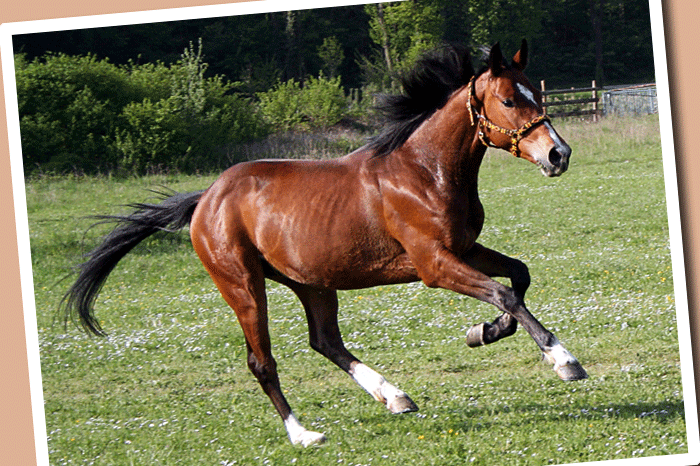A horse can startle, spook, or shy from a surprising or strange sight, smell, or sound based on his characteristic reactivity. There are many facets that contribute to the severity of a horse’s reaction, such as the temperance of breed, personality, experiences, trainer or owner management, and medical conditions.
There are breeds that have traits that are unique and bred for a specific purpose, hence a particular breed becomes known for its reactions to signals from trainers and riders. For example, the Arabians’ and thoroughbreds’ sensitivity is useful in their responses and reactions to racing; contrarily, they tend to be frightened by loud or sudden noises. Then there is “the American Quarter Horse and the draft breeds, which are bred to work in various environments — doing such things as cutting cows, trail riding, and working fields — and they are generally more calm and non-reactive to all sorts of things, including sounds,” according to aspcabehavior.org.
Personality and experiences, management, or medical conditions of the horse either will heighten his reactivity to his fears or bear no effect. In any case, it’s wise to be knowledgeable in how you, as the rider or owner, react when a horse startles.
Do be safe: There are many different approaches that should be consulted through a licensed professional or trainer. No matter your approach, safety, common sense and ethical treatment should be the first priority. Only an experienced rider or trainer should handle a horse that easily startles. When you know your horse will be exposed (outside of training) to his fear, keep him safely stalled until the occurrence is over.
Do try preventive medicine: Consider the old adage coined by Benjamin Franklin: “An ounce of prevention is worth a pound of cure.” Prevention is a good method to begin with when it comes to training your horse, before the fear develops, and as a foal it is the best time to start either desensitizing or counterconditioning. Desensitizing includes gradual and methodical introduction of the horse’s fears until the animal is no longer sensitive. Counterconditioning trains the horse to have positive feelings when exposed to his fear. These approaches or the combined method called DSCC can safely be applied through a series of sessions, which are controlled exposures and elements. The foal or horse is trained and encouraged to react positively to his fear in a safe and slow process.
Do remain calm and patient: Keep your cool when your horse startles, especially while you’re riding. Be confident in your skills, the horse will respond to your reactions as well. We can easily become startled ourselves; rider tension or anxiety will only further aggravate the horse.
Do respond: Be alert and aware of your horse’s sensitivity — don’t ignore it! Fully acknowledge through your body language what startled your horse. Communicate through gentle touch and voice your awareness of his fear while encouraging him to move on. Guide your horse to move past what has scared him or direct him around it.
Don’t frighten or force: You never want to intentionally frighten your horse or force him to face the fear. In the process of retraining, the horse’s exposure to his fear should be gradual and steady. Decrease his session when the fear is present and try not to expose him to his fears outside of the sessions. Don’t anticipate a balk or spook while riding as it will only cause stress for you and the horse.
Don’t strike or yell: Surely, this would be counterproductive to your desensitizing and counterconditioning as well as unethical. Hitting or yelling would only associate these actions with the animal’s fears and not aid in the horse’s recovery from his reactive behaviors.
Don’t limit or avoid exposure: Desensitizing, counterconditioning, and DSCC are methods that once your horse has mastered you should never entirely quit. Continue with “maintenance sessions” as a preventative measure to ensure that the fear doesn’t resurface.
Sources:
http://www.aspcabehavior.org/articles/126/Horses-Who-Are-Afraid-of-Noises.aspx
http://www.aspcabehavior.org/articles/132/Spooking-Under-Saddle-.aspx
CREDIT
story by J.P. Smith

